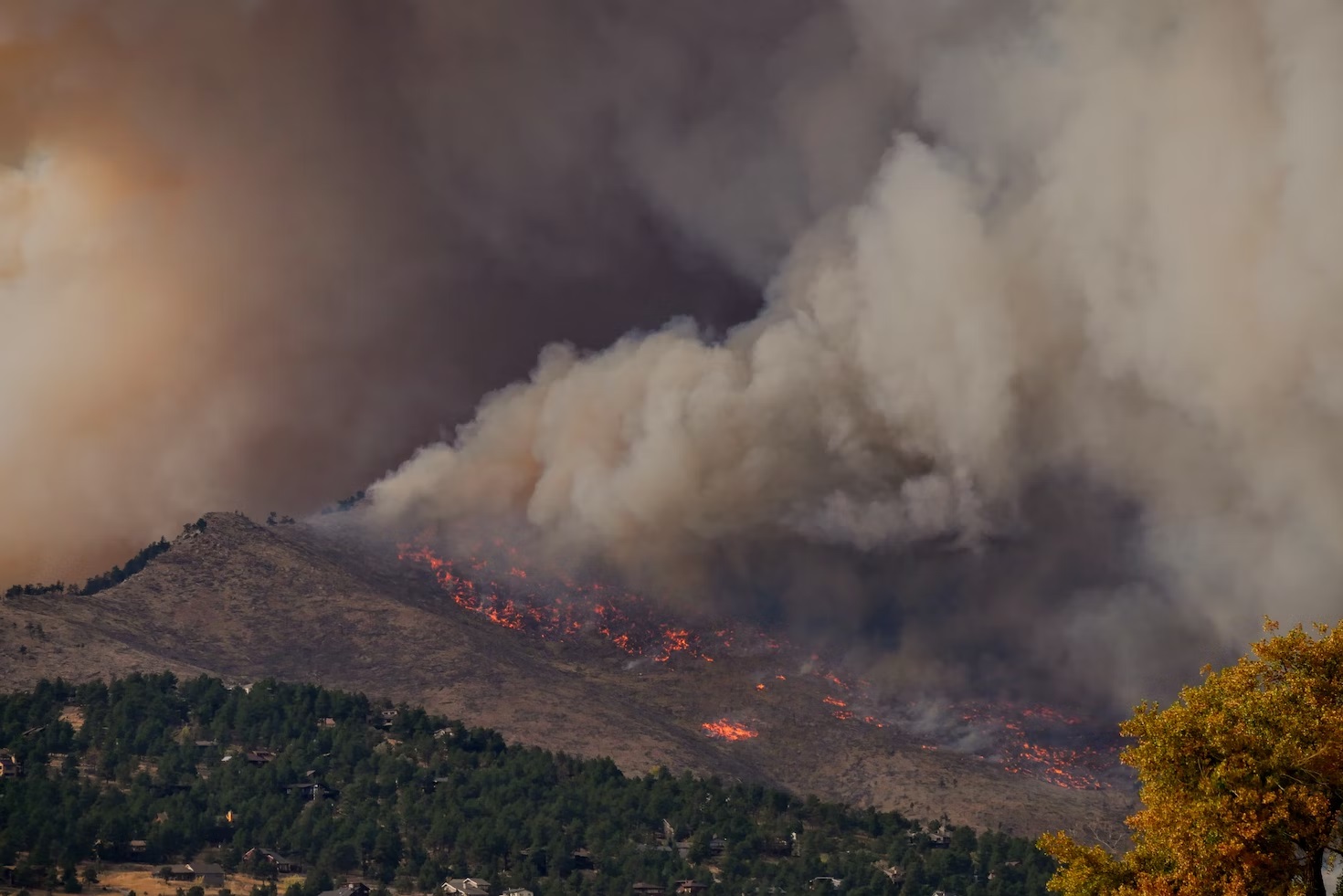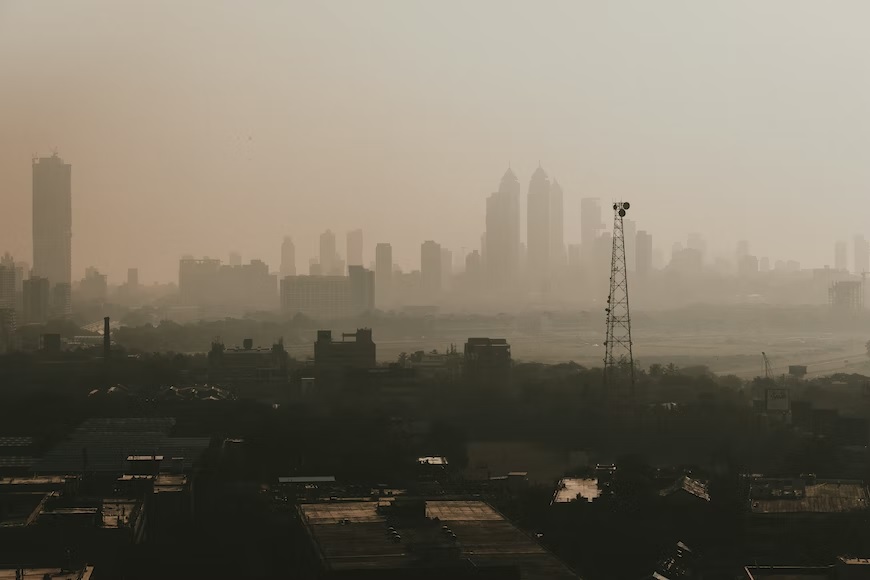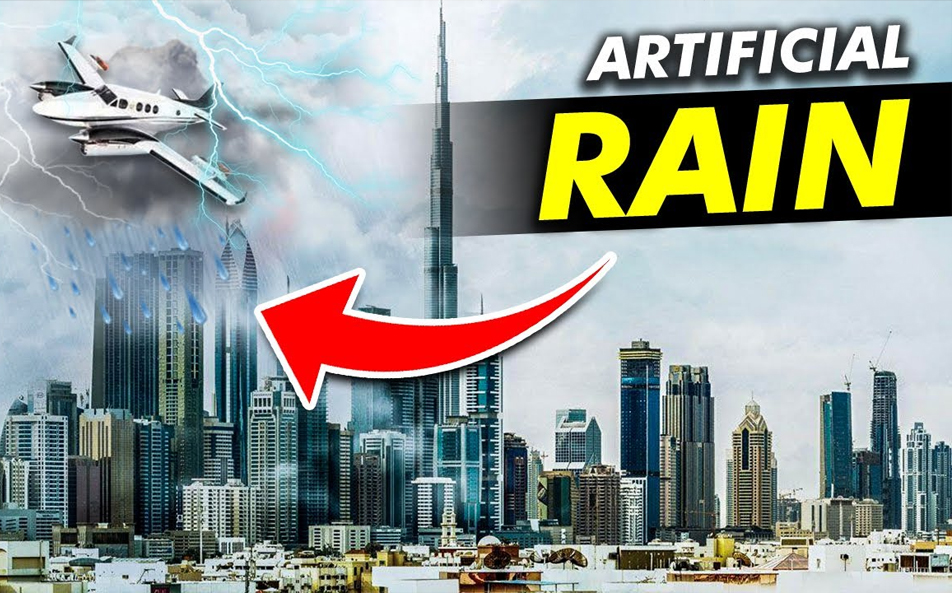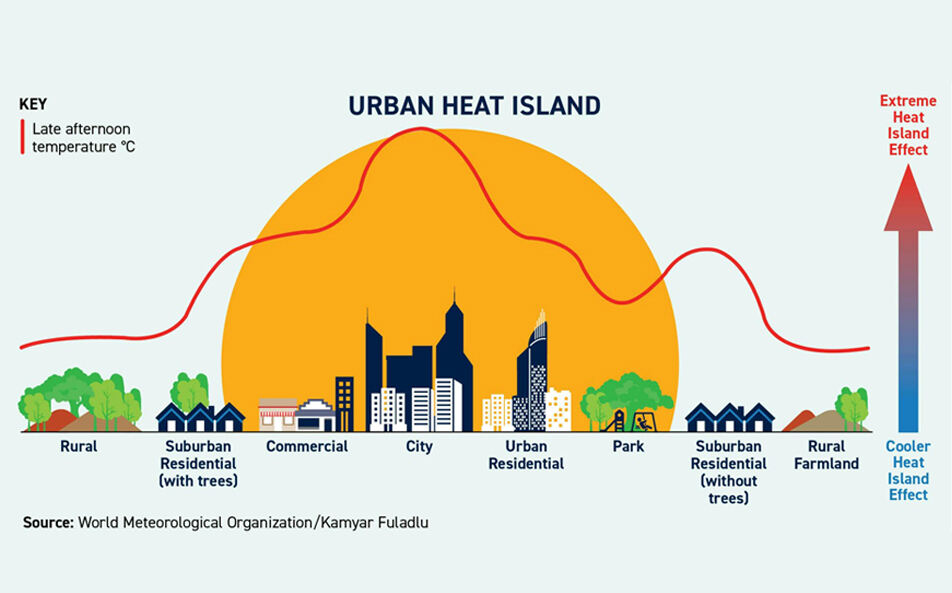
The United Indian

Let’s begin with a little science trivia.
Any guesses on how much air we breathe in a year?
Well! surprisingly, we humans breathe up to four million litres of air annually.
The gigantic quantity itself explains the logic as to why air is an essential element in human survival and has a significant impact on our daily lives. However, thanks to several human activities & environmental changes, air pollution has been a serious threat in the last few decades. Especially urban air pollution, which is extremely bad for health and can also cause allergies that affect the respiratory system. Major urban cities' air quality has serious health, social, and financial effects.
Talking about our capital city, according to a WHO survey of 1,650 global cities, Delhi and NCR region has some of the worst air quality in the world.
Air pollution in Delhi and NCR remains a major concern for its residents during winter as Delhi's air quality remains under the "severe" category during Diwali and Post Diwali period. Delhi is covered in a cascading haze of smog— witnessing very poor air quality, sticking to the trend that has existed during winter months for some years now, and the situation becomes annually recurring.
The Air Quality Life Index (AQLI) released by the Energy Policy Institute at the University of Chicago showed that residents of Delhi stand to lose 10 years of life expectancy as the poor air quality damages the lungs of the youth.
At this point, it is important to discuss the root causes that have led to this bottom-line situation. So here’s a brief insight into which are the contributors and how they impact.
The role of local resources in adding pollutants
First The Centre for Science and Environment (CSE), a Delhi-based organization that focuses on environment-related research, said that local sources caused around 32.9 percent of the pollution in Delhi from October 21 to 26 in 2022, with vehicular emissions contributing a whopping 51 percent to the PM 2.5 levels. The next largest contribution was 13 percent from residential sources and 11 percent from industries. Construction activities contributed around 7 percent to PM2.5, followed by 5 percent each from the burning of waste and the energy sector. Road dust contributed around 4 percent to PM2.5 levels.
Stubble burning during early winters leading to poor air quality
The smoke from farm fires carried to the national capital region by transport-level winds during early winters is one of the major causes of delhi air pollution during this period. Farmers in northern India usually do this every year to prepare the ground for the next round of crops. As per stats, these accounted for 30 percent of the PM2.5 pollution in the capital, according to the Central Pollution Control Board and SAFAR. According to government data, the impact of the seasonal burning of farm stubble varies on a daily basis. And although the practice was banned in 2015, it still continues. This year, stubble burning incidents in Punjab alone rose 12.59 percent year-on-year. The impact of the seasonal burning of farm stubble varies on a daily basis, going by government data. And although the practice was banned in 2015, it still continues.

The bursting of Diwali Fireworks contributes to the low levels of AQI
Another major topic of discussion is the contribution of fireworks to air pollution during Diwali celebrations every year. There is no doubt that fireworks contain toxic substances that lead to increased concentrations of PM2.5 particles, as well as sulphur dioxide, nitrogen dioxide etc., But are firecrackers among the root causes of this crucial situation is a question still under debate.
State Governments’ operative measures to control Delhi’s Air Pollution
The Delhi administration is trying its best to effectively combat the yearly air problem as the city faces an imminent air catastrophe. There have been a number of action plans to reduce Delhi's air pollution like :
1. The city banned building and demolition operations.
2. The Government ordered its staff to work from home.
3. Trucks carrying non-essential commodities are prohibited from entering the city
4. There are now 372 water sprinkling tanks in use in Delhi. Moreover, to ensure greater water sprinkling, fire department water machines will be stationed in 13 hotspots.
5. The Centre's air quality panel instructed authorities to ban non-BS VI diesel-powered light motor vehicles and truck entrances into the city imposed under the last stage of the Graded Response Action Plan to control the situation.
6. The government's own Central Pollution Control Board lists 15 substances in fireworks that it says are "hazardous and toxic." Hence state banned the sale and use of fireworks during Diwali celebrations.
The skyrocketing pollution level in Delhi's air is an annual winter ordeal. A complex mix of factors such as Diwali fireworks, urban emissions from vehicles, cooking, lighting, waste burning, industries, power plants and construction activities are collectively the reasons that affect it. Studying the stats of 2022, we can see an improvement in conditions as there has been swiftness in control measures. Concluding, Delhi’s air pollution can be checked, provided combined efforts of the government as well as residents.
Key Takeaways
Little steps can bring about a lot of change in the scenario, so here’s how you can help.
1. Reduce the number of trips you take in your car and opt for carpool, along with using public transport wherever feasible.
2. Strictly minimizing the use of plastic and opting for reusable alternatives.
3. Turning off the lights & appliances when not in use can not only save energy resources but also help control pollutants emitted while energy consumption. Every unit of electricity saved is fuel less burned.
4. Contributing towards planting trees
5. Adapting for zero wastage model
6. Use renewable resources by installing equipment such as solar power, and rainwater harvesting.
7. Another vital habit that needs to be developed is waste segregation. Biodegradable & Non-biodegradable waste must be disposed of separately so that they can be treated with the correct methods. So, one must dispose potentially of harmful products, such as cells, batteries, pesticide containers, etc, properly.
Through this post, we wish to share our strong opinion on the failed efforts to control make Delhi’s air liveable and healthy. We hope that you are there with us in our endeavour to bring about this change and welcome your valued thoughts regarding the same.
Reference
- https://www.livemint.com/news/india/delhi-air-pollution-curbs-from-today-here-s-what-is-allowed-what-s-not-11667611479136.html
- https://timesofindia.indiatimes.com/topic/delhi-air-pollution
- https://indianexpress.com/article/explained/delhi-air-pollution-biggest-culprit-this-year-and-possible-solutions-8247065
- https://www.nbcnews.com/news/world/india-new-delhi-air-pollution-rcna56535
- https://www.ncbi.nlm.nih.gov/pmc/articles/PMC3612296/
- https://www.thehindu.com/news/national/explained-what-has-delhi-done-over-the-decades-to-combat-air-pollution/article66107736.ece
- http://ecoursesonline.iasri.res.in/mod/page/view.php?id=4561
Read more in Environment
May 27, 2025
TUI Staff
May 27, 2025
TUI Staff

Stay Tuned with The United Indian!
Our news blog is dedicated to sharing valuable and pertinent content for Indian citizens. Our blog news covering a wide range of categories including technology, environment, government & economy ensures that you stay informed about the topics that matter most. Follow The United Indian to never miss out on the latest trending news in India.
©The United Indian 2024











